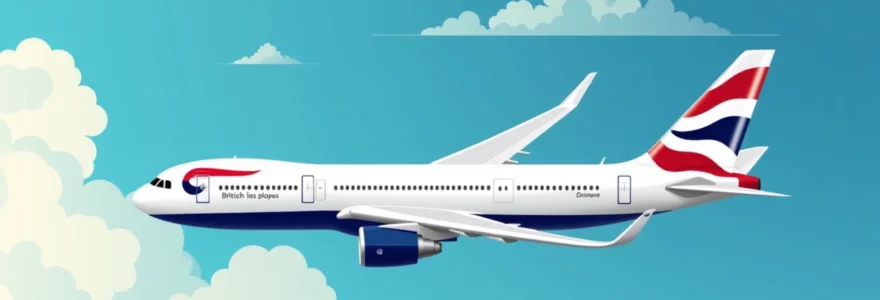Securing the best deals on airfare can significantly impact your travel budget and overall experience. With constantly fluctuating prices and complex pricing algorithms, finding the optimal time to book your flight tickets can feel like a daunting task. However, understanding the intricacies of airline pricing strategies and leveraging the right tools can help you navigate this challenge effectively.
From long-haul international journeys to quick domestic hops, each type of flight comes with its own set of pricing nuances. By mastering the art of timing your bookings and utilizing advanced fare comparison techniques, you can unlock substantial savings on your air travel expenses.
Airline pricing algorithms and dynamic fare structures
Airlines employ sophisticated algorithms to determine ticket prices, taking into account a multitude of factors such as demand, seasonality, competitor pricing, and historical data. These dynamic pricing models adjust fares in real-time, often resulting in significant price fluctuations within short periods.
One key aspect of airline pricing is yield management , a strategy that aims to maximize revenue by selling the right seat to the right customer at the right time. This approach involves segmenting customers based on their willingness to pay and adjusting prices accordingly.
Airlines typically divide their inventory into different fare classes, each with its own pricing and restrictions. As lower fare classes fill up, prices naturally increase. This is why you might notice substantial price differences for the same flight on different days or even at different times on the same day.
Understanding the basics of airline pricing algorithms can help you make more informed decisions when booking your flights and potentially save hundreds of pounds on your travel expenses.
Optimal booking windows for international vs. domestic flights
The ideal time to book your flight can vary significantly depending on whether you’re traveling domestically or internationally. Let’s explore the optimal booking windows for different types of flights to help you secure the best deals.
Long-haul routes: 6-8 months in advance
For international long-haul flights, booking well in advance is often the key to securing the best prices. Airlines typically release their flight schedules and initial fares around 11 months before departure. However, the sweet spot for booking tends to fall between 6 and 8 months prior to your travel date.
During this period, airlines are eager to fill their planes and may offer competitive prices to attract early bookers. Additionally, booking this far in advance gives you a better chance of snagging your preferred seats and flight times.
Short-haul flights: 4-6 weeks prior
When it comes to domestic or short-haul international flights, the optimal booking window is generally closer to your departure date. Aim to book these flights approximately 4 to 6 weeks before your intended travel date.
This timeframe allows you to take advantage of potential price drops while still ensuring a good selection of available seats. However, it’s important to note that this guideline can vary depending on factors such as destination popularity and seasonal demand.
Holiday season exceptions: christmas and new year bookings
The holiday season, particularly Christmas and New Year, presents a unique challenge when it comes to booking flights. Due to high demand, prices for flights during these periods tend to be significantly higher than usual.
For holiday travel, it’s advisable to book as early as possible, ideally 9 to 12 months in advance. This approach not only helps you secure better prices but also ensures you have a wider range of flight options to choose from.
Low-cost carrier strategies: ryanair and EasyJet pricing models
Low-cost carriers like Ryanair and EasyJet operate on a different pricing model compared to traditional airlines. These carriers typically start with very low base fares and gradually increase prices as the departure date approaches and seats fill up.
For flights with low-cost carriers, booking early is often the best strategy. However, it’s worth noting that these airlines frequently run flash sales and promotions, which can offer exceptional value if you’re flexible with your travel dates.
Leveraging fare comparison tools and meta-search engines
To maximize your chances of finding the best flight deals, it’s crucial to utilize fare comparison tools and meta-search engines. These platforms aggregate prices from multiple airlines and online travel agencies, allowing you to compare options quickly and efficiently.
Skyscanner’s price alert feature for fare tracking
Skyscanner offers a powerful price alert feature that can notify you when prices change for your desired route. By setting up alerts, you can monitor fare fluctuations over time and book when prices are at their lowest.
To use this feature effectively, set up multiple alerts for different date ranges and nearby airports. This approach gives you a comprehensive view of pricing trends and helps you identify the most cost-effective options.
Google flights’ date grid and price graph functionality
Google Flights provides two particularly useful tools for finding the best flight prices: the date grid and price graph. The date grid displays prices for a range of dates around your selected travel period, allowing you to easily spot cheaper days to fly.
The price graph, on the other hand, shows historical price trends for your chosen route. This feature can help you understand typical pricing patterns and identify whether current fares are higher or lower than average.
Momondo’s trip finder for flexible destination options
If you’re flexible with your travel destination, Momondo’s Trip Finder can be an invaluable tool. This feature allows you to search for flights to anywhere in the world based on your budget, preferred travel dates, and desired trip duration.
By using the Trip Finder, you might discover affordable destinations you hadn’t previously considered, potentially leading to significant savings on your overall travel costs.
Kayak’s fare forecasting technology
Kayak employs advanced fare forecasting technology to predict whether flight prices are likely to rise or fall in the near future. This feature can be particularly helpful when you’re unsure whether to book immediately or wait for a potential price drop.
While no prediction is guaranteed, Kayak’s forecasts are based on extensive historical data and can provide valuable insights to inform your booking decisions.
Hidden-city ticketing and Multi-City itineraries
Advanced booking strategies like hidden-city ticketing and multi-city itineraries can sometimes yield significant savings, but they come with certain risks and ethical considerations.
Hidden-city ticketing involves booking a flight with a layover at your intended destination and not boarding the connecting flight. While this can sometimes result in lower fares, it’s important to note that this practice violates most airlines’ terms of service and can lead to consequences if detected.
Multi-city itineraries, on the other hand, involve booking separate legs of your journey individually rather than as a round trip. This approach can sometimes result in lower overall costs, particularly for complex itineraries or when combining flights from different airlines.
While these strategies can offer potential savings, it’s crucial to weigh the risks and potential drawbacks before employing them in your travel planning.
Impact of oil prices and global events on airfare
External factors such as oil prices and global events can have a significant impact on airfare. Understanding these influences can help you anticipate potential price fluctuations and make more informed booking decisions.
OPEC production decisions and ticket price fluctuations
Oil prices play a crucial role in determining airline operating costs, and consequently, ticket prices. When OPEC (Organization of the Petroleum Exporting Countries) makes decisions that affect oil production and prices, it can lead to corresponding changes in airfare.
Generally, when oil prices rise, airlines may increase ticket prices to offset higher fuel costs. Conversely, falling oil prices can sometimes lead to more competitive fares, although this relationship isn’t always direct or immediate.
COVID-19 pandemic effects on airline pricing strategies
The COVID-19 pandemic has had a profound impact on the airline industry, leading to significant changes in pricing strategies. During periods of low demand, airlines have often offered heavily discounted fares to stimulate bookings.
As travel restrictions ease and demand recovers, pricing strategies continue to evolve. It’s important to stay informed about current travel regulations and airline policies when planning your trips in the post-pandemic era.
Brexit implications for UK-EU flight routes and costs
Brexit has introduced new complexities for flights between the UK and EU countries. Changes in regulations and potential increases in operating costs for airlines could impact ticket prices on these routes.
When booking flights between the UK and EU destinations, it’s advisable to monitor price trends closely and be aware of any new travel requirements or restrictions that may affect your journey.
Loyalty programs and credit card points optimisation
Maximizing the benefits of airline loyalty programs and credit card rewards can significantly reduce your overall travel costs. By strategically earning and redeeming points, you can access discounted or even free flights.
British airways executive club tier point maximisation
The British Airways Executive Club offers various opportunities to earn Tier Points, which determine your status level within the program. Higher status levels come with perks such as lounge access, priority boarding, and bonus Avios (the program’s currency).
To maximize your Tier Points, focus on booking flights that offer the best Tier Point earning potential relative to the fare. Long-haul flights in premium cabins typically offer the highest Tier Point rewards.
American express membership rewards transfer partners
American Express Membership Rewards points are highly versatile and can be transferred to various airline loyalty programs. This flexibility allows you to take advantage of transfer bonuses and optimize your points’ value across different airlines.
Keep an eye out for transfer promotions, which can significantly boost the value of your Membership Rewards points when converting them to airline miles.
Star alliance Round-the-World ticket hacks
Star Alliance offers Round-the-World tickets that allow you to visit multiple destinations across different continents for a fixed price. By carefully planning your itinerary and maximizing stopovers, you can extract exceptional value from these tickets.
Consider incorporating high-value routes and premium cabin segments to maximize the benefits of your Round-the-World ticket. This strategy can result in substantial savings compared to booking each leg separately.
By applying these advanced strategies and staying informed about industry trends, you can significantly enhance your ability to book plane tickets at the best time and price. Remember to always compare options, stay flexible when possible, and leverage loyalty programs and rewards to maximize your travel value.


